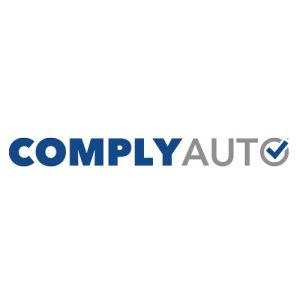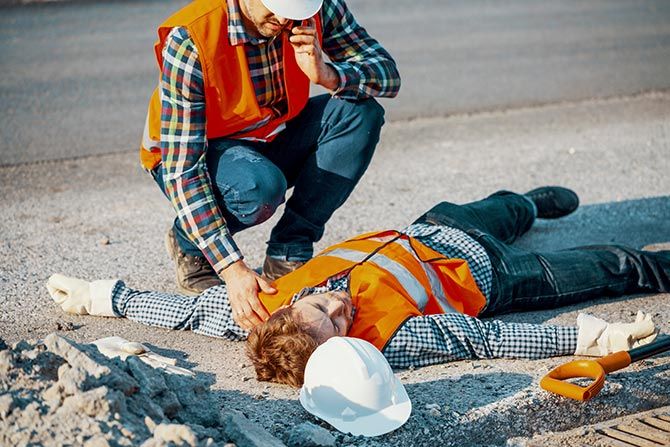Heat-related injury and illness have been consistently among the top five issues that the Occupational Safety and Health Administration (OSHA) has cited businesses for nationwide. With such a vast number of requirements of heat illness and injury prevention laws, it is never too early to understand the processes you need to have in place to ensure that you are providing a safe working environment for your employees as well as protecting your business from any inspection by state or federal agencies.
Late last year, OSHA published in the Federal Register a Notice of Proposed Rulemaking (NPRM) for Heat Injury and Illness Prevention in Outdoor and Indoor Work Settings. This standard would require employers to create a plan to evaluate and control heat hazards in their workplace and train their employees on these concepts. The public comment period closed in January. This follows in the footsteps of several other states that have adopted their own standards.
Additionally, OSHA launched the National Emphasis Program (NEP) in 2022, which expanded its ongoing initiative to protect employees from heat-related hazards in both indoor and outdoor workplace settings by stepping up enforcement and providing compliance assistance and outreach efforts. The NEP is part of the broader Department of Labor response to President Biden’s Executive Order “Tackling the Climate Crisis at Home and Abroad.” Absent specific regulations, OSHA has consistently relied on the authority granted to it by Section 5 of the OSHA Act, also known as the General Duty Clause, and has leaned on this authority to penalize businesses for workplace heat-related injuries and deaths.
The following requirements for general industry (i.e., dealers) apply to all states. Meaning you only have a few months to develop and implement a heat illness prevention program if you do not currently have one. Any additional emphasis by various states will be identified accordingly.
Heat Illness Prevention Program
A written heat illness prevention program must be established that details specific procedures for monitoring and responding to heat hazards. This plan must address how supervisors will monitor ambient temperatures, assess worker exertion levels and implement appropriate controls. The program must be readily available to employees and regularly updated to reflect changing workplace conditions.
Water Provision
Employers must provide fresh, cool drinking water in sufficient quantities (at least 1 quart per employee per hour) that is easily accessible throughout the work shift. The water must be located close to the work area and maintained at a temperature that encourages regular consumption.
Workers should be encouraged by the employer to drink water frequently, approximately every 15-20 minutes, even if they don’t feel thirsty.
Rest and Shade
Accessible shaded or air-conditioned rest areas must be provided where employees can cool down during breaks. Rest breaks are scheduled based on temperature, workload and worker acclimatization, with increased frequency during extreme heat. Shade structures must be large enough to accommodate all employees on break.
California Requirements
Businesses must designate a “cool-down area” (i.e., an area that is blocked from direct sunlight and shielded from other high radiant heat sources and is either open to the air or provided with ventilation or cooling) that is located as close as practicable to the areas where employees are working and maintained at less than 82°F.
Acclimatization Procedures
New workers must be gradually introduced to hot environments over seven to 14 days. Workers returning after an absence of three or more days should start at 50% of their normal workload in hot environments, with gradual increases over three days. Supervisors must closely monitor all workers during the acclimatization period for signs of heat-related illness.
California Requirements
Exposed employees must be closely observed for 14 consecutive days if they work in any of the following conditions:
- In a work area where the temperature or heat index, whichever is greater, equals or exceeds 87°F;
- In a work area where the temperature equals or exceeds 82°F for employees who wear clothing that restricts heat removal; or
- In a high radiant heat area where the temperature equals or exceeds 82°F.
Maryland Requirements
Exposed employees must be closely observed for 14 consecutive days if either of the following occurs:
- When an employee is newly exposed to heat in the workplace; or
- When an employee returns to work after seven or more consecutive days of absence from the workplace.
Washington Requirements
Exposed employees must be closely observed for 14 consecutive days for employees not yet acclimatized to the heat, those returning from absences, and all employees during a “heat wave.” For these purposes, “heat waves” are days when heat will be at or above 80°F and at least 10°F higher than the five-day average highs.
Training
All employees and supervisors must receive training on recognizing heat hazard symptoms, first aid procedures and preventive measures. Training should cover how to report symptoms, proper hydration practices and the importance of monitoring oneself and coworkers. This education should be provided before hot weather begins to equip employees with necessary knowledge and information and refreshed periodically throughout the hot seasons.
California Requirements
There are two specific trainings that all businesses must implement: supervisory and non-supervisory training. Make sure all employees complete the applicable training.
Monitoring Systems
A “buddy system” should be implemented so workers can monitor each other for signs of heat-related illness as well as an effective communication system that includes cellular phone or text messaging. Administrative controls should be used, such as scheduling strenuous work during cooler parts of the day and rotating workers to limit heat exposure. Supervisors must actively monitor weather conditions and be prepared to adjust work protocols when the heat index rises.
Emergency Response Procedures
Clear emergency procedures must be established and communicated to all workers to respond to potential heat-related illnesses. At least one person trained in first aid should be present at all times, with knowledge of how to respond to heat-related emergencies. Contact information and directions to the nearest medical facility should be readily available to all workers.
Recordkeeping
Employers must maintain accurate OSHA 300 logs and 301 injury and illness recordkeeping forms documenting any heat-related illnesses or injuries. These records should include emergency room visits related to heat exposure, even if hospitalization did not occur. Additionally, all prevention measures, training sessions and interventions related to heat hazards should be documented and retained.
Specific Accommodations and Procedures
Additional protections must be implemented when the heat index reaches specific thresholds, such as 80°F for initiating basic precautions and 95°F for high-heat procedures. Workers wearing personal protective equipment require more frequent breaks and additional cooling measures. Workload expectations should be adjusted during high heat periods, especially for strenuous activities.
California Requirements
The employer must establish specific procedures when the temperatures equal or exceed 95°F. These procedures include ensuring effective communication with employees (voice, observation or electronic means), observing employees for alertness and signs or symptoms of heat illness, designating one or more employees to call for emergency medical services, reminding employees to drink plenty of water, and conducting pre-shift meetings to review high heat procedures, encourage water consumption and remind employees of their right to cool-down breaks when necessary.
Washington Requirements
The employer must establish a minimum rest period of 10 minutes for every two hours worked if outdoor temperatures reach between 90°F and 100°F, and 15 minutes for every one hour worked if temperatures equal or exceed 100°F. These breaks can be taken at the same time as any meal or rest period.
Maryland Requirements
The employer must establish a minimum rest period of 10 minutes for every two hours worked if outdoor temperatures reach between 90°F and 100°F, and 15 minutes for every one hour worked if temperatures equal or exceed 100°F. These breaks can be taken at the same time as any meal or rest period.
Regular Inspections
Frequent safety and health inspections must be conducted to identify and address potential heat hazards before they cause illness. Supervisors should regularly assess workplace conditions, including temperature, humidity and radiant heat sources, and adjust work procedures based on inspection findings and changing heat conditions.
California Requirements
The employer must regularly measure the temperature and heat index, recording whichever is greater, and maintain records of these measurements. In lieu of this requirement, employers can establish engineering controls to reduce and maintain both the temperature and heat index to below 87°F (or 82°F where employees are wearing clothing that restricts heat removal or work in high radiant heat areas). Alternatively, employers can implement administrative controls to reduce and maintain the temperature to similar thresholds.
Questions?
The team at ComplyAuto is ready to help you prepare for the warm weather. Existing ComplyAuto Safety clients can schedule a call with their dedicated client success manager to get started. All other interested parties can contact us at info@complyauto.com.








